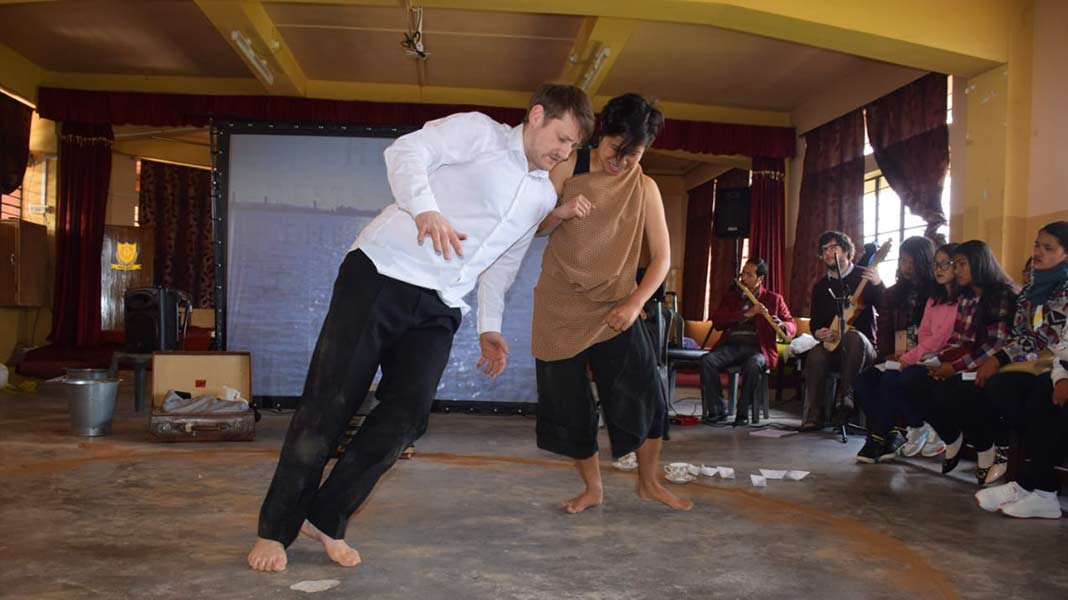Performing Journey: The Confluence of two Cultures

JOWAI: Life is a journey as someone rightly said and travels we did from the dawn of time and continue to do so till this moment. Travellers not only meet people but learn from the new cultures too and because every culture have stories a traveller is always enriched by the tales one came into contact with. One who journey cross not only physical but even cultural borders too and the interface of people of different cultures produce more stories and this is what performers were trying to do telling stories and retelling of stories anew.
The performance was based on Khasi folk tales and the letters written by Welsh Missionaries who took the long and arduous journey to preach the word in the hills. They were letters written at different point of time and by different missionaries stationed in the Khasi and Jaiñtia hills. The first letter used in the play was by none other than Thomas Jones written before he embarked on the journey to the Khasi and Jaiñtia hills. The letter include those which the missionaries reported about the first chapel build in the hills and also described in detail the structure of the building and gave the meaning of the element use in the building.
The play base on the letters was beautifully knitted together with the folk tales of the Khasi Jaiñtia people starting from the story of the seven huts and the seven nests, the lost script and u Sier Lapalang. The performance was also played to the tunes of Khasi and Welsh music played by Gareth Bonello from Wales and Benedict Hynñiewta from the Khasi Jaiñtia hills. The play was jointly directed by Lisa Lewis who is working at the University of South Wales in collaboration with filmmaker Aparna Sharma of the University of California Los Angeles. The other local contributors to the making of the play were Esther Syiem and Desmond Kharmawphlang.
The message of the play was brought to live by the splendid performance of the two great actors Rhys ap Trefor from Wales and our own Lapdiang Syiem. The audience were spellbound throughout the 50 minutes long performance and Lapdiang enacting the cry and the wailing of u Lapalang’s mother for the loss of her son brought tears to the eyes of most of the spectators. ‘It was a very powerful performance’ said H.H. Mohrmen. R.M. Khonglah a teacher in the Khasi department of the Thomas Jones College said that she had learned tips how bring to live the Lapalang story to the students from the performance. David Diengdoh of Jaintia Eastern College commended the entire troupe for the superb performance.
The play received a standing ovation from the audience at the Thomas Jones College and it was followed by lively interaction between the artists and the audience.




Leave a Reply